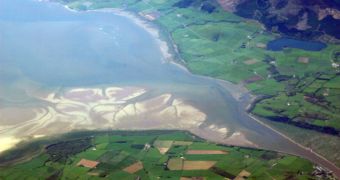Either because changing environmental conditions are bound to bring forth an increase in the frequency and intensity of storms, or because several concerns have been raised with respect to global fish stocks, a team of researchers recently received considerable funding to look into how storms influence river pollution.
More precisely, these environmental scientists are to investigate how living conditions for the fish presently found in a river-estuary in Hampshire are altered by storms that hit this region.
In order to solve this puzzle, the team has been presented with ₤1million (roughly €1.26 million / $1.58 million), which are to be spent on monitoring both nutrient concentrations and water quality throughout a period of time of twelve months.
Special emphasis will be placed on carrying out these measurements following powerful storms, which are known to stir up sediments and carry various chemical compounds typically used in agricultural practices from one region to another.
Interestingly enough, it seems that the use of newly developed technologies will enable these researchers to predict with a high degree of accuracy when exactly a storm is most likely to strike, meaning that they will have enough time available to prepare for the task ahead of them.
As the researchers explain, by juggling in such ways with substances that do not naturally occur in aquatic environments, storms can cause build-ups of phosphates and nitrates, encourage the development of algae and thus cut off fish from their oxygen supplies.
“Approximately 40 per cent of the world's population live within 100 km of the coast and estuaries making them some of the most vulnerable sites for impact from man's activities.”
“Pollutants such as runoff from fertilized fields and discharge from sewage treatment plants are gathered by rivers from large areas of the interior and accumulate in estuaries and this is aggravated by storm activity,” stated Dr. Gary Fones from the University of Portsmouth.
According to the official website for the University of Southampton, once this investigation is completed, communities living nearby rivers and estuaries will be able to make significantly more informed decision concerning the ways in which they manage nitrates and phosphates, thus cutting down on the pollution levels of said water sources.

 14 DAY TRIAL //
14 DAY TRIAL //